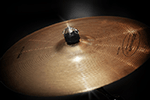
Quick Tips
There’s nothing quite like seeing your drums shining under the stage lights. The gleam of the chrome, the sparkle of the finish and the shine of the cymbals is amazing. Keeping it all looking great however is something you have to work on. There are all kinds of things that threaten the cleanliness of your drums especially if you are out gigging.
 Dust and dirt are the common threats but there are a host of other dangers. Spilled drinks, sweat and even blood are all things I’ve had to contend with after gigs. Regardless of what ends up on your drums it’s important to get it off to avoid damage. Your shiny finishes can become dull over time. Chrome can be eaten away by rust and corrosion if left dirty. You also want to keep all those moving parts cleaned and greased to ensure smooth action.
Dust and dirt are the common threats but there are a host of other dangers. Spilled drinks, sweat and even blood are all things I’ve had to contend with after gigs. Regardless of what ends up on your drums it’s important to get it off to avoid damage. Your shiny finishes can become dull over time. Chrome can be eaten away by rust and corrosion if left dirty. You also want to keep all those moving parts cleaned and greased to ensure smooth action.
Cleaning your drums is easy but it can be time consuming. Set aside an afternoon at least once a year and do a thorough job. You’ll love how your drums look after cleaning and give you peace of mind knowing you’re protecting your investment. Let’s be honest, drums aren’t cheap.
Step 1: Disassemble & Inspect Your Drums
 Clean your drums one at a time and disassemble them completely. You want to get all the dirt out of every nook and cranny. Remove the heads and put all the hardware in a safe place. You’ll be surprised how much junk can build up between the heads and the rims. Once you have the drum torn down you can clean it. It’s also good to do an inspection of your drums at this point. Check for loose or missing hardware. Also check tension lugs for damage to the threads and see if they’re bent. Replace any that are.
Clean your drums one at a time and disassemble them completely. You want to get all the dirt out of every nook and cranny. Remove the heads and put all the hardware in a safe place. You’ll be surprised how much junk can build up between the heads and the rims. Once you have the drum torn down you can clean it. It’s also good to do an inspection of your drums at this point. Check for loose or missing hardware. Also check tension lugs for damage to the threads and see if they’re bent. Replace any that are.
Step 2: Clean the Drum
Clean the entire drum with something light like window cleaner or just a damp cloth. Don’t use anything harsh like ammonia, gritty cleaners like Ajax or anything else that’s heavy duty. Drums are like fine furniture and should be treated as such. Clean the outside of the drum with cleaner but avoid using anything on the inside. The interior of a drum is unfinished and any liquids will absorb into the wood. A quick wipe with a clean rag will be enough to get the dust out. Cleaning the drum heads can be done with a simple swipe of cloth. It’s also a good time to inspect heads to see how they’re holding up. If they’re getting worn out replace them now while you’ve got the drums apart.
Step 3 Polishing the Set
After you’ve cleaned the drum you can give it a good polish if you want. A simple, non-abrasive chrome polish will work great on the hardware. Apply a small amount to a rag and work it into every crevice. When you’re done wipe it away with a clean rag and it should shine. Spray furniture polish will work great on the finish of most shells. This will give them some shine and help repel dust in the future.
Step 4: Cleaning the Cymbals
 Cleaning cymbals can help keep them shiny and also sounding good. Cymbals are primarily bronze and need some care. A gentle cleaner like dish soap can remove fingerprints and anything else that’s built up on the surface. If you’ve picked up some old cymbals or yours have been neglected then a good polish will do wonders. Be sure to use something that’s intended for bronze or brass. A general polish may harm your cymbals if it’s not formulated for bronze. You can read specifically about how to clean cymbals in that article.
Cleaning cymbals can help keep them shiny and also sounding good. Cymbals are primarily bronze and need some care. A gentle cleaner like dish soap can remove fingerprints and anything else that’s built up on the surface. If you’ve picked up some old cymbals or yours have been neglected then a good polish will do wonders. Be sure to use something that’s intended for bronze or brass. A general polish may harm your cymbals if it’s not formulated for bronze. You can read specifically about how to clean cymbals in that article.
Step 5: Cleaning the Hardware
 It’s particularly important to pay special attention to cleaning your drum’s hardware. With all the moving parts you want these kept in good working order. Hi-hat stands and bass pedals deserve special attention. A simple cleaner will be enough to clear away the general grime. Then you can polish up the chrome as you did when cleaning the drums. Disassembling stands is handy to clear away any grime that’s built up where tubes fit together. Doing this will make adjustments easier in the future. When you’re done cleaning use a little bit of lubricant on any moving parts. Stick to a silicone based lubricant rather than petroleum to avoid damage to finishes. If you pick up used hardware that’s had a rough life you might have some rust or corrosion to contend with. Steel wool will quickly remove the spots and help limit it’s ability to spread.
It’s particularly important to pay special attention to cleaning your drum’s hardware. With all the moving parts you want these kept in good working order. Hi-hat stands and bass pedals deserve special attention. A simple cleaner will be enough to clear away the general grime. Then you can polish up the chrome as you did when cleaning the drums. Disassembling stands is handy to clear away any grime that’s built up where tubes fit together. Doing this will make adjustments easier in the future. When you’re done cleaning use a little bit of lubricant on any moving parts. Stick to a silicone based lubricant rather than petroleum to avoid damage to finishes. If you pick up used hardware that’s had a rough life you might have some rust or corrosion to contend with. Steel wool will quickly remove the spots and help limit it’s ability to spread.
Step 6: Reassembly and Tuning the Drums
When you’ve finished cleaning your drums you can reassemble them and tune them back up. If you’ve never tuned your drums before there are some great guides and videos online. Once that’s done you’re ready to get back to playing.
In-between Cleanings (maintaining your drums)
Full drum cleanings should be done once a year but in the meantime you can do a little upkeep. After gigs, especially those outside, spot clean your drums with a damp cloth. Nasty things like spilled liquids will eat away at finishes if not attended to. It’s tough after a long night but the next day do a quick wipe down on your gear to avoid damage.
Also, despite how expensive they can be, a set of cases is a must. Even soft cases will do wonders at keeping your drums in good condition. I picked up a fantastic set of drums once that were stored in a barn but since they were in good cases they were still in great shape.
Great Products to Clean Drums
Brasso: A great all-purpose metal polish, it will work on your hardware as well as your cymbals. Brasso is highly recommended by many different drummers and you can order it from Amazon.
WD40 Silicone: A great silicone spray for your hardware it will help keep things working smoothly. Use a little on moving parts and other hardware to prevent rust between cleanings. You can find a can of Silicone on Amazon here.
Shop Towels: If it’s been a long time since you’ve done a good cleaning of your drums a big box of shop towels is a must. More durable than paper towels they’ll leave less lint behind and power through grime.